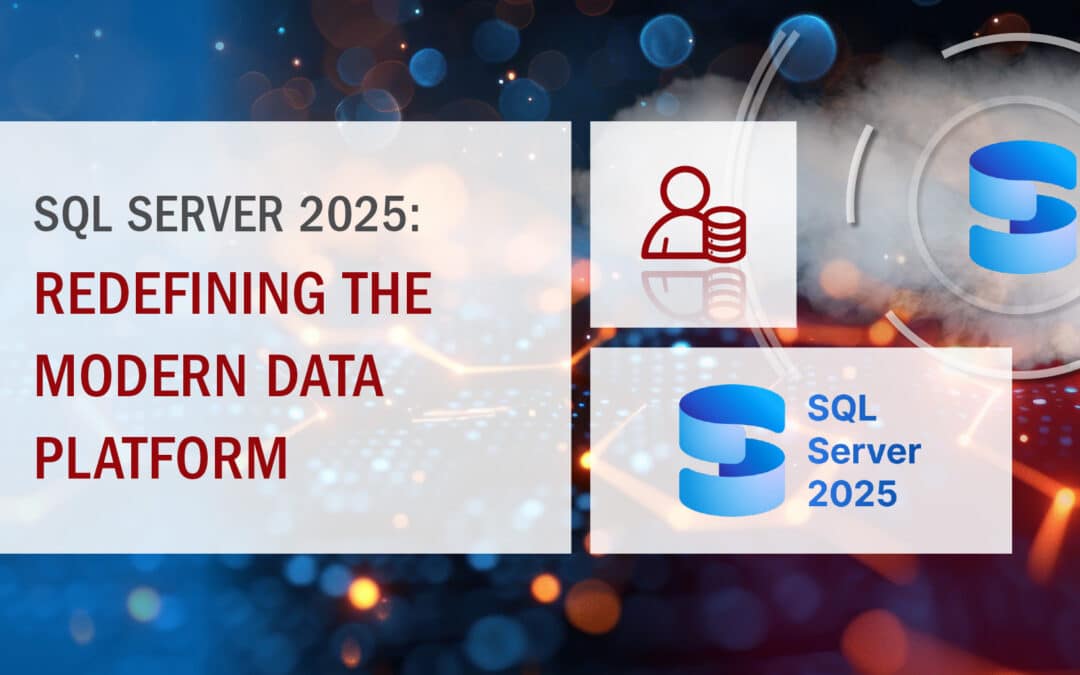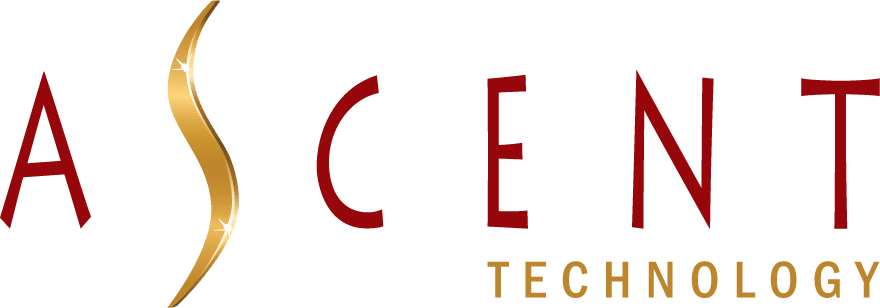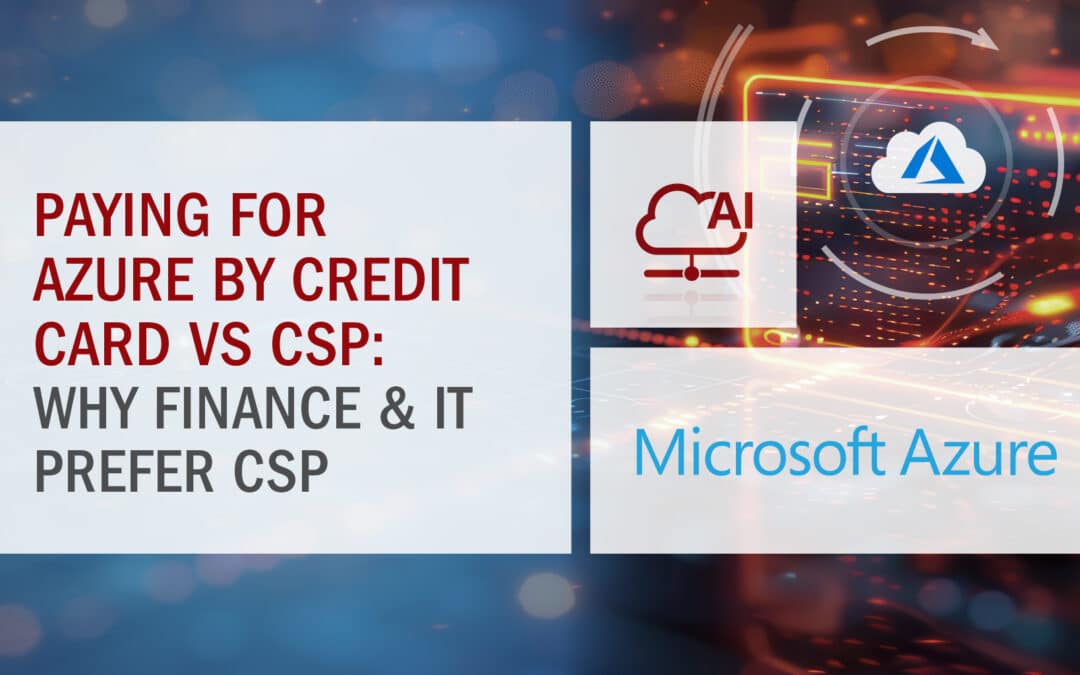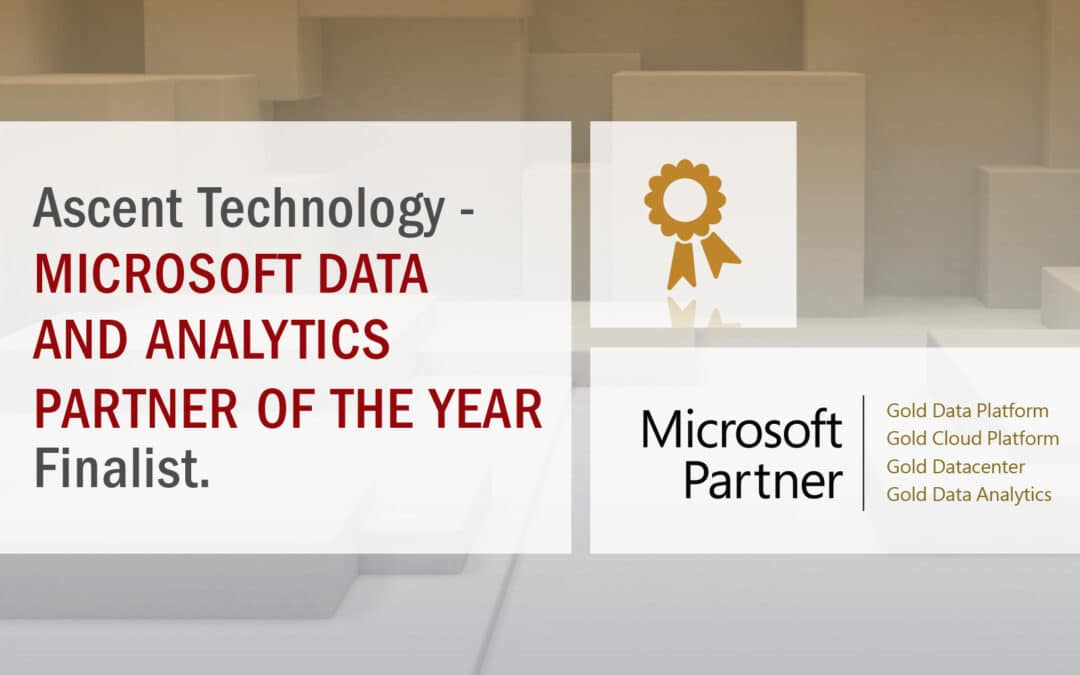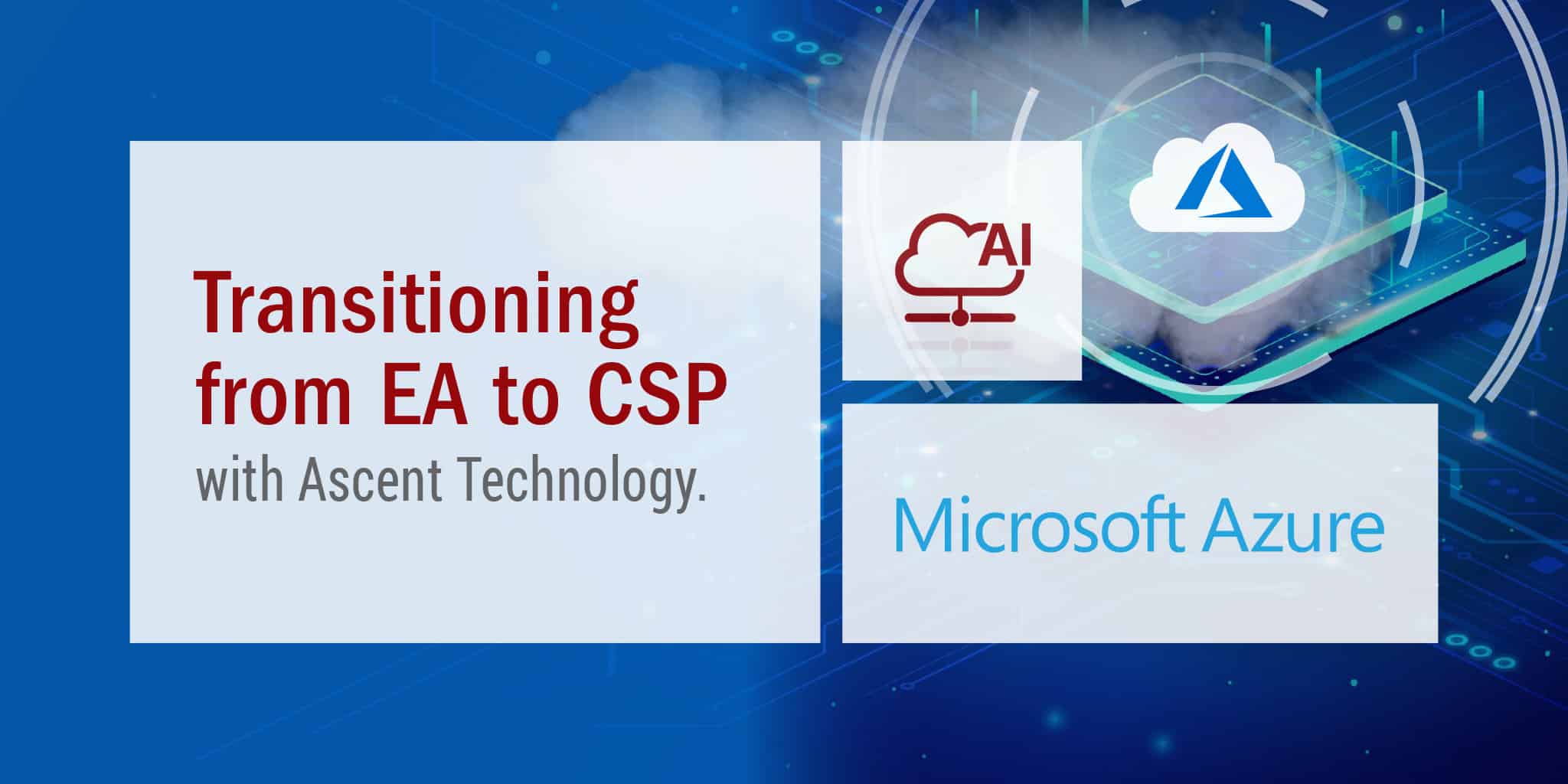Explore why Microsoft is moving Enterprise Agreement (EA) clients to the Microsoft Cloud Solution Provider (CSP) model, and how Ascent Technology ensures a smooth, strategic transition.
Key Takeaways
- Microsoft is shifting Enterprise Agreement (EA) customers toward the Cloud Solution Provider (CSP) model to modernise both licensing and Azure consumption for agility and flexibility.
- CSP offers scalable seat licensing, pay-as-you-go Azure billing, partner-managed support, and faster provisioning – a better fit for cloud-first strategies.
- EA-to-CSP transitions can be seamless with the right guidance, enabling both licensing optimisation and Azure workload cost control.
- Ascent Technology offers expert support for transitioning from EA to CSP – with consulting-led engagement and cost-optimised delivery.
Microsoft’s Strategic Shift
Microsoft is changing the way organisations consume and manage their cloud services. For years, the Enterprise Agreement (EA) was the go-to model for enterprises, offering volume licensing across Microsoft’s suite of products and committed Azure consumption at pre-agreed levels.
But today, that model is being re-evaluated.
With the rise of agile, cloud-native infrastructure and growing pressure on IT leaders to do more with less, Microsoft is actively encouraging EA clients to transition to the Cloud Solution Provider (CSP) model.
This shift impacts two key areas:
- Licensing – Moving from rigid, multi-year volume licensing to flexible subscription terms.
- Azure Consumption – Transitioning from upfront Azure monetary commitments under EA to usage-based, partner-optimised billing under CSP.
The move reflects a broader strategy: enable businesses to be more flexible, more cost-efficient, and more cloud-ready – without the limitations of long-term, rigid contracts or fixed Azure spend commitments that don’t match actual usage.
Why Microsoft Is Encouraging the Shift
Microsoft’s move away from the traditional EA model is part of a broader effort to modernise how organisations consume its services. There are several key drivers behind this change – and they apply to both licensing and Azure consumption:
- Licensing Simplification – Streamline agreements by replacing complex, multi-year EA contracts with more flexible subscription terms.
- Support for Cloud-First Strategies – Align licensing and Azure billing models to better suit agile, cloud-native environments.
- Encouraging Flexibility – Enable seat-based licensing changes within defined windows and allow Azure services to scale up or down based on real-time business needs.
- Partner Ecosystem Enablement – Leverage CSP partners to provide proactive optimisation, not just for licenses but also for Azure cost management, reserved instance planning, and workload scaling.
In short, Microsoft sees CSP as the future: a model better suited to dynamic licensing requirements and variable Azure workloads, ensuring organisations pay only for what they use while having the agility to adopt new services quickly.
CSP vs EA: What’s the Difference?
While both the EA and CSP models give you access to Microsoft’s full product and cloud portfolio, the way they handle licensing and Azure consumption is fundamentally different. Understanding these differences is key to making the right choice for your organisation.
The tables below break down how each model approaches contract terms, billing, flexibility, and support – for both licensing and Azure usage.
Licensing Comparison:
| Feature |
EA – Licensing |
CSP – Licensing |
| Contract Term |
3-year fixed term |
Monthly, yearly, or 3-year terms |
| Billing Model |
Annual license commitment; true-up at renewal |
Monthly subscription billing; pay for actual licenses in term |
| Flexibility |
Cannot reduce license counts mid-term; increases handled via annual true-up |
Seat-based subscriptions: add seats anytime; reductions allowed within a 7-day window after purchase/renewal, or at term renewal |
| Support Model |
Direct from Microsoft (limited partner involvement) |
Partner-led support and lifecycle guidance |
| License Management |
Central IT control, often rigid |
Can be centralised or distributed to departments as needed |
| Ideal For |
Static, large-scale IT environments |
Agile, cloud-first, growth-focused organisations |
Azure Consumption Comparison:
| Feature |
EA – Azure Consumption |
CSP – Azure Consumption |
| Billing Cycle |
Annual or multi-year monetary commitment with overage billed separately |
Monthly post-paid billing; pay only for actual usage |
| Commitment Model |
Requires upfront commitment; difficult to right-size mid-term |
No mandatory upfront commitment (unless agreed for discounts); fully usage-based |
| Scaling |
Can scale resources anytime, but pre-commitment can cause under/over-spend |
Scale services instantly with no commitment waste |
| Pricing |
EA discount tiers, but adjustments usually only at renewal or via overage |
CSP Azure Plan pricing plus partner-led cost optimisation strategies |
| Cost Management |
Internal responsibility; limited proactive optimisation tools |
Partner-managed cost monitoring, reserved instance planning, and workload optimisation |
| Ideal For |
Predictable, static workloads with long-term commitments |
Variable workloads needing agile scaling and cost transparency |
Benefits of Moving to CSP
The advantages of the CSP model go beyond simplified licensing. By addressing both seat-based licensing and Azure consumption, CSP provides a unified approach to managing your Microsoft environment. Here’s how it can transform the way you operate:
- Cost Control and Transparency – Pay only for what you use, whether it’s seat-based licensing or Azure services, with monthly invoicing and no unnecessary upfront commitments.
- Operational Agility – Adjust licenses within defined terms and scale Azure resources on demand to match real-time workload requirements.
- Simplified Renewals – Eliminate complex, multi-year renewal negotiations for both licensing and Azure commitments.
- Access to the Full Microsoft Cloud Stack – From Microsoft 365 to Azure PaaS and IaaS, all major Microsoft services are available via CSP.
- Proactive Azure Cost Optimisation – Partners can monitor Azure usage in real time, implement reserved instance or savings plan strategies, and right-size workloads to avoid overspend.
- Closer, More Strategic Support – Partner-led advisory ensures your licensing and Azure environment are continually aligned with business goals.
With these benefits in mind, organisations often want to know how the CSP model works in practice – and what it means for existing agreements, services, and support. The following frequently asked questions address the most common points discussed with clients considering an EA-to-CSP transition.
Frequently Asked Questions (FAQs)
| Can I switch from EA to CSP before my current agreement ends? |
| You can begin preparing for a CSP transition before your EA expires — and even purchase new services via CSP alongside your EA. However, existing EA licenses and Azure commitments typically remain active until the agreement term ends. At that point, your CSP contract can take over without service disruption. |
| Will I lose access to any Microsoft products or services when I move to CSP? |
| No. Almost all products available under EA are also available through CSP — including Azure, Microsoft 365, Dynamics 365, and more. |
| What happens to my existing licenses and billing cycles? |
| Ascent ensures billing continuity by mapping your EA entitlements to equivalent CSP offerings, and by aligning Azure workloads with a flexible, usage-based billing model. |
| Will my Azure services work differently under CSP? |
| No — Azure runs exactly the same under CSP as it does under EA. The change is in how you’re billed and supported. Under CSP, you’re billed monthly for actual usage, and your partner can provide proactive cost optimisation, workload right-sizing, and reserved instance planning. |
| Can I still access Microsoft support under CSP? |
| Yes — but under CSP, support is provided by your partner (like Ascent), often with faster, more contextualised resolution. For Azure specifically, this means support teams who understand your environment can address both licensing and technical configuration issues in one place. |
Why Partner with Ascent Technology for EA-to-CSP Transitions
Understanding the CSP model is just the first step. The real value comes from partnering with an expert who can ensure your transition is smooth, cost‑optimised, and aligned with your business goals.
This is where our expertise makes the difference – delivering enterprise-grade value without the enterprise-level complexity or cost.
Transitioning from EA to CSP is more than a licensing change – it’s an opportunity to rethink how your Microsoft environment is purchased, managed, and optimised. That means aligning both your licensing strategy and Azure consumption model with your business goals.
Ascent Technology Offers:
✅ Expertise in Microsoft Licensing & Cloud Strategy
✅ Consulting-Led, Data Platform Architecture-Aware Engagement
✅ Secure, Seamless Transition Process
✅ Optimised Cost Structures
✅ Ongoing Strategic Support
Contact Us to Start Your EA-to-CSP Transition with Confidence
If your organisation is still operating under a Microsoft Enterprise Agreement, now is the time to evaluate your options.
Microsoft is steadily shifting its licensing strategy – and the CSP model offers greater flexibility, cost control, and partner support across both your Microsoft licensing and Azure workloads. But making the move requires more than just flipping a switch.
Contact Us Contact Us to learn how Ascent Technology can help you transition from EA to CSP with confidence. We’ll guide you through:
- Licensing strategy – ensuring you only pay for what you need, with room to grow.
- Azure cost optimisation – aligning spend with workload demand, eliminating waste, and maximising ROI.
- Technical alignment – making sure your environment is secure, efficient, and ready for the future.
- Long-term Microsoft success – proactive governance, monitoring, and advisory to keep your estate optimised.
Also See
> Selecting the Right Microsoft CSP for Your Business
By: Johan Lamberts
